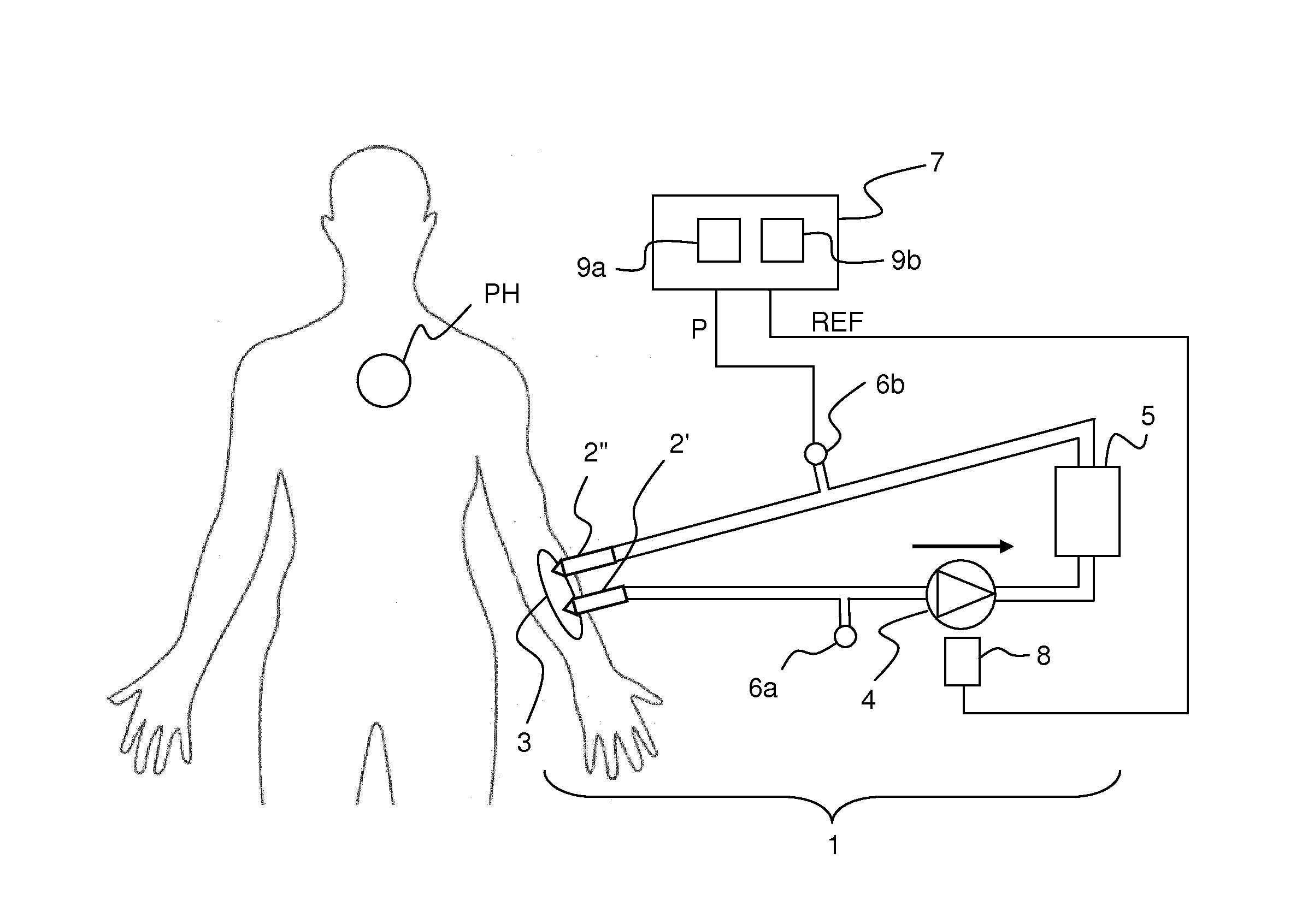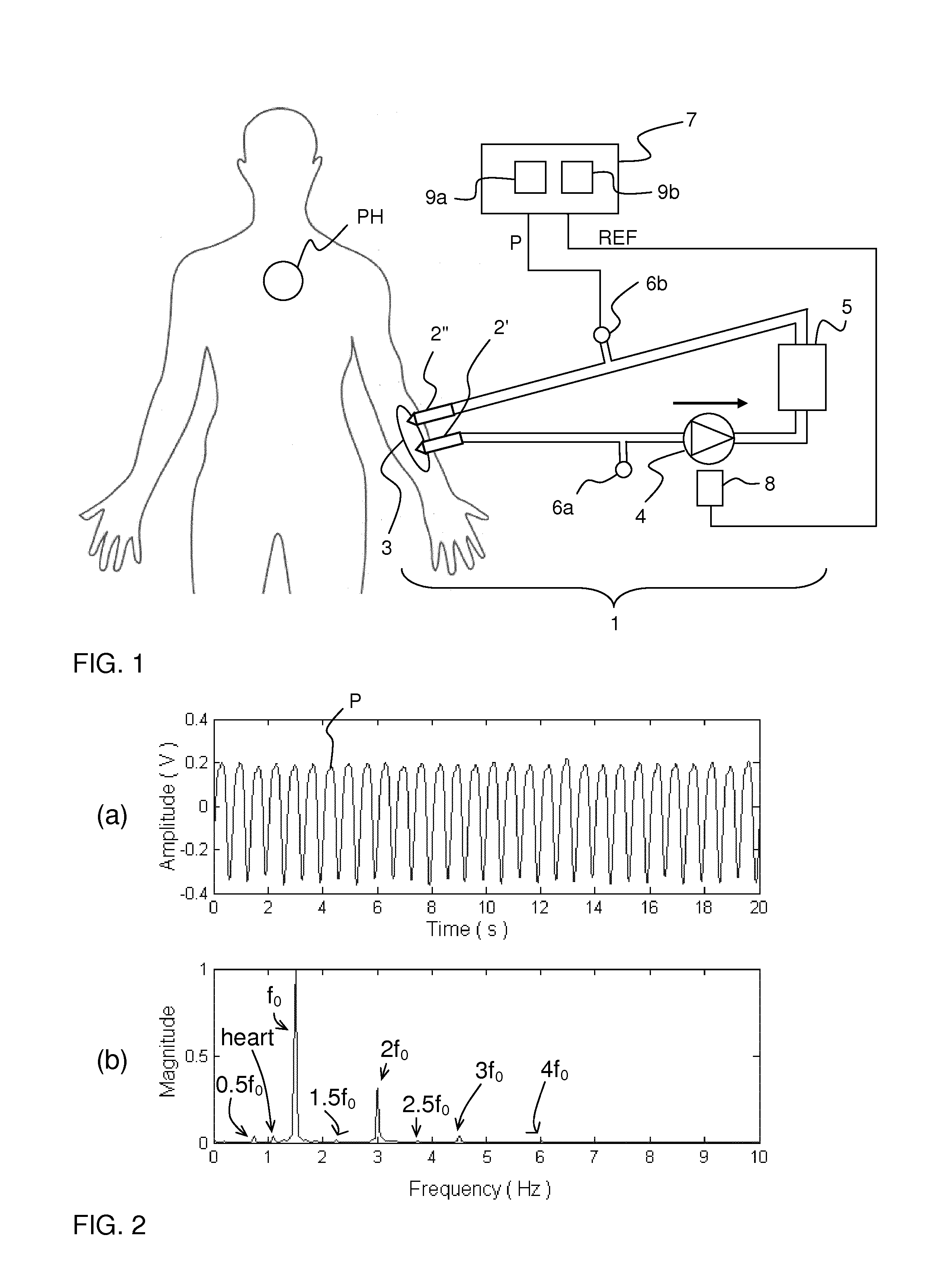Separation of interference pulses from physiological pulses in a pressure signal
a pressure signal and interference pulse technology, applied in the field of pressure signal processing techniques, can solve the problems of difficult to properly remove e.g. pump pulses, difficult to properly remove them, so as to improve the representation of improve the representation of b pulse sequence, and improve the sequence of a pulse sequence
- Summary
- Abstract
- Description
- Claims
- Application Information
AI Technical Summary
Benefits of technology
Problems solved by technology
Method used
Image
Examples
implementation example
[0127]Below follows a brief mathematical description of an implementation of the principles described in the foregoing. The description is given with reference to the steps in FIG. 7.
Step S2
[0128]The speed of the blood pump is typically known beforehand since it is set for the dialysis machine by the clinical staff. However, to make the proposed method independent of the machine settings, the number of pump revolutions in a certain time interval, denoted by Np, is determined from the zero crossings of the observed signal y(t), see FIG. 8(b). If the pump speed for some reason is altered by the staff during treatment, it is straightforward to re-estimate Np. Initially, the pump speed is assumed to be constant with period length Tp, corresponding to one complete revolution of 360 degrees. The onset time of the k:th revolution is given by
tp,k=kTp,k=0,Np−1. (1)
[0129]For simplicity, the onset time of the first revolution is assumed to be at 0. An initial pump cycle profile p(t;Tp) is obt...
PUM
 Login to View More
Login to View More Abstract
Description
Claims
Application Information
 Login to View More
Login to View More - R&D
- Intellectual Property
- Life Sciences
- Materials
- Tech Scout
- Unparalleled Data Quality
- Higher Quality Content
- 60% Fewer Hallucinations
Browse by: Latest US Patents, China's latest patents, Technical Efficacy Thesaurus, Application Domain, Technology Topic, Popular Technical Reports.
© 2025 PatSnap. All rights reserved.Legal|Privacy policy|Modern Slavery Act Transparency Statement|Sitemap|About US| Contact US: help@patsnap.com



